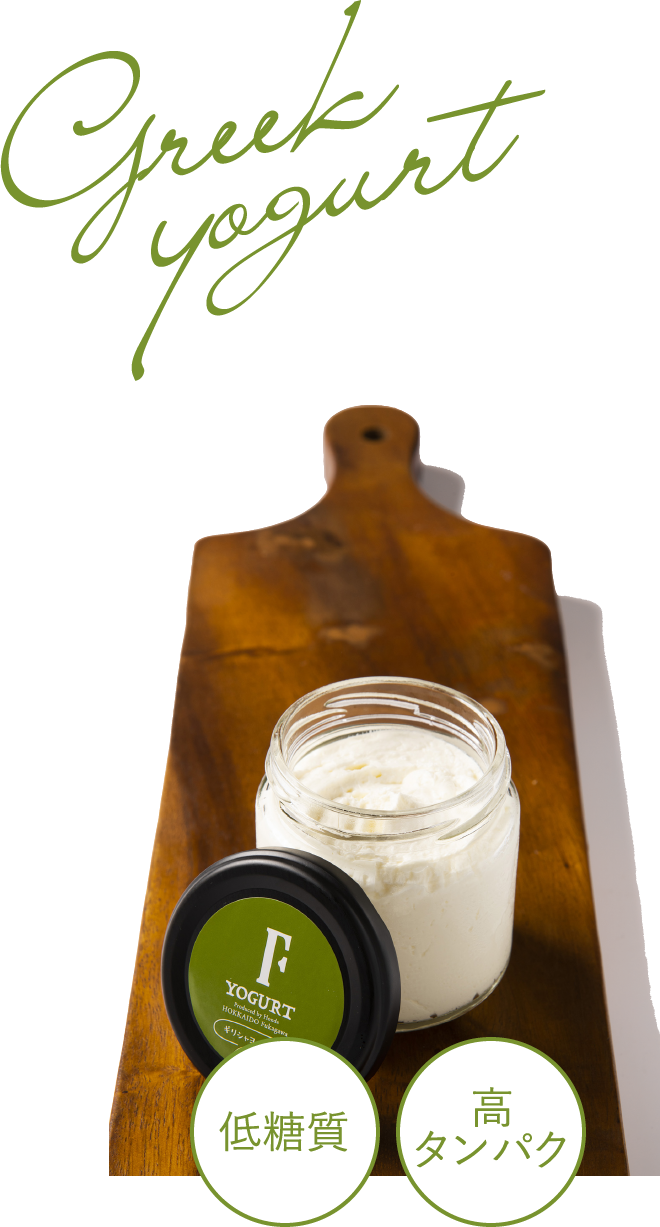What
exactly is
Greek
yogurt?
Difference
between
regular yogurt
and
Greek yogurt.
Greek yogurt is a hardened yogurt made by removing the whey and water from regular yogurt. Because it has no water, it has a smooth texture similar to cream cheese, and can be used not only for desserts but also for a variety of dishes. Because the lactose contained in the water in yogurt is removed, it has higher protein and lower sugar content than regular yogurt.
| Moisture (whey) |
protein | carbohydrates and sugar |
|
|---|---|---|---|
| F Greece Yogurt |
moisture removed Because it has beenmany |
than regular yogurtabout half |
|
| common yogurt |
few | many |


I turned off
the water at home
yogurt and
F yogurt is
What's wrong?
The biggest difference is the taste. F Yogurt selects bacteria for Greek yogurt from hundreds of lactic acid bacteria. If you drain the water from regular yogurt, it may end up with an unbalanced taste, such as being too sour or too sweet. Also, when making it at home, the moisture release rate is often uneven, making it difficult to achieve a smooth texture.
| taste | lactic acid bacteria | |
|---|---|---|
| F Greece Yogurt |
Smooth texture like cream cheese | Lactic acid bacteria selected for making Greek yogurt Balanced taste |
| drained yogurt at home |
Unbalanced with too much acidity or too sweetness | |
Yogurt is
Even if you eat
it every day
good!

The lactic acid bacteria contained in yogurt cannot be stored in the body forever, so we recommend eating at least a small amount every day. Please use it for your daily health.
Increase immunity and prevent infections
Intestinal bacteria closely related to health
Intestinal bacteria are broadly divided into three types: ``good bacteria,'' ``bad bacteria,'' and bacteria in between, commonly known as ``opportunistic bacteria.'' It is important to increase the proportion of good bacteria such as bifidobacteria and lactic acid bacteria.

Beneficial bacteria produce lactic acid and acetic acid, making the intestines acidic and activating intestinal peristalsis. By doing so, we suppress the growth of bad bacteria and increase the body's immunity, thereby preventing infections caused by food-poisoning bacteria and pathogenic bacteria. Additionally, it is known to lower cholesterol. When the balance is disrupted (an increase in bad bacteria) due to factors such as physical condition, diet, age, stress, etc., various negative effects can occur, such as constipation, diarrhea, rough skin, and allergies.
What can I do to improve my intestinal environment?
Increase the number of good bacteria with “intestinal activities” and clean up your intestines!
Directly ingest live beneficial bacteria every day
Foods that contain bifidobacteria and lactic acid bacteria include yogurt, lactic acid bacteria drinks, natto, and pickles.
Eat it every day to deliver good bacteria to your intestines!
However, even if these bacteria exist in the intestines for a certain period of time (about two weeks), they are excreted with the stool, so it is important to continue to ingest them every day to replenish the intestines.
